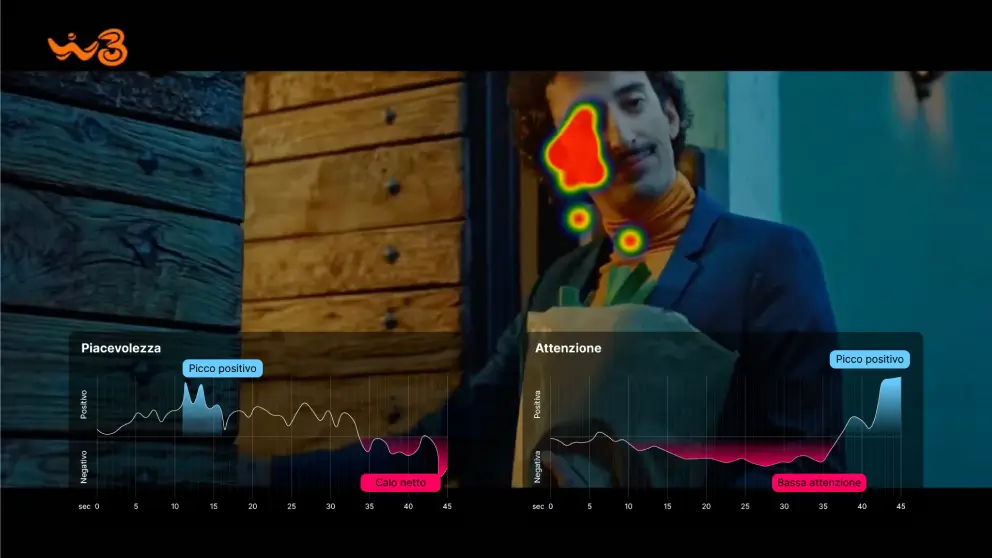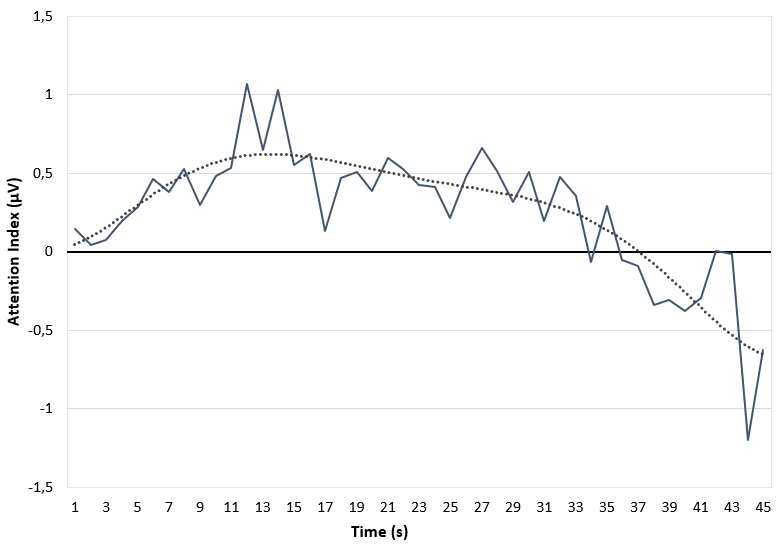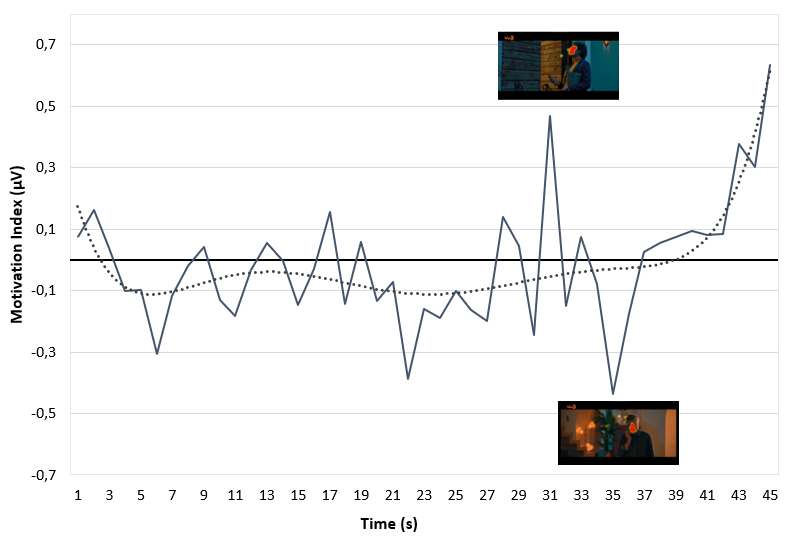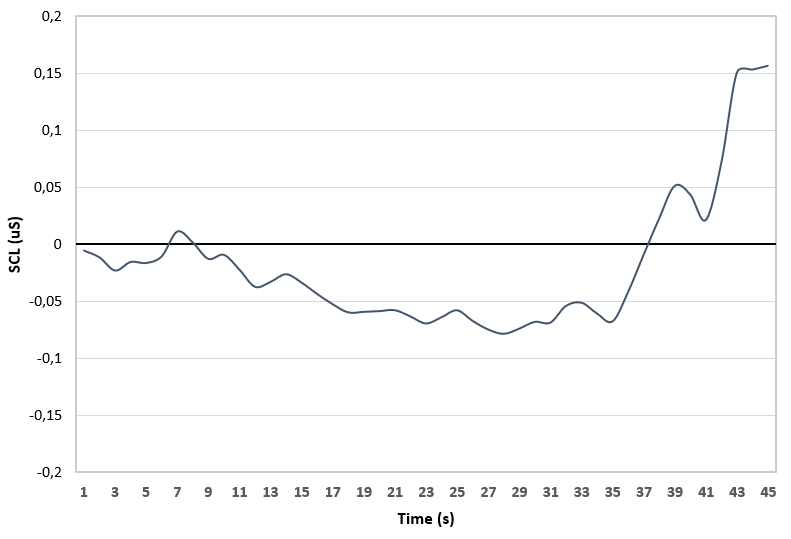WINDTRE commercial: psychophysiological analysis reveals low effectiveness in WI-FI CALLING promotion due to the duration and number of inputs

In this study, through psychophysiological recordings with EEG (electroencephalogram), GSR (conductance) and Eye Tracking, we analyzed the WINDTRE commercial relating to the «WI-FI CALLING» promotion with the aim of evaluating its effectiveness.
While it was generally appreciated by the participants, on the other hand, it emerged that only a low percentage of them remembered what the offer was once they finished watching.
The critical issues that emerged could be traced back to two main factors:
- Excessive length of advertising
- The number of inputs within the spot
From the psychophysiological analyzes it was in fact highlighted that:
- People’s attention lasts up to about 30 seconds, thus missing out on the final promotional content;
- Visual attention, on the other hand, is often divided between various inputs (setting, actors, writings);
- Emotional response to the commercial was not adequate for participants to memorize
In detail:
In the following table, we show which are precisely the indices used, elaborated starting from the psychophysiological responses of the participants.

EYE Tracking:
The aggregated analysis of the ocular behavior (i.e. heatmap of the fixations) during the viewing of the spot, allows to understand which are, among its elements, those that most attract people’s attention, as well as the degree of homogeneity/heterogeneity of the flow of visualization.
EEG:
The attention index makes it possible to accurately understand the level of attention generated by the spot and which parts (i.e. frames) are able to attract people’s attention the most, positively or negatively. The attention index is an indicator extracted from the brain activity at the level of the frontal lobe, selecting a specific frequency band.
The motivation index, on the other hand, makes it possible to accurately understand the level of pleasantness generated by the spot and, in this sense, which parts (i.e. frames) are capable of arousing a positive or negative feeling in people.
The motivation index is an indicator extracted from the frontal brain activity, given by the asymmetry of the activity between the two hemispheres in a specific frequency band.
GSR:
The SCL, the level of skin conductance, changes according to the dynamics of skin sweating, which in turn is linked to emotional activation in response to an input. The index itself is non-specific, i.e. it manifests the subject’s emotional response without giving information about its positivity or negativity. Moments that arouse a high emotional response, regardless of whether it is linked to a pleasant sensation or not, make the person more likely to remember the content of the commercial.
Results
Attention and in particular the attention index, which we can obtain through scalp electroencephalography, plays a fundamental role in the interpretation of the psychophysiological signals described up to now.
Where attention is present, there is a possibility that the information conveyed by the video will elicit an emotional response in the participants and will be memorized.
The graph shows the dynamics of the attention level of the participants over time while watching the spot:
- No particular peaks are highlighted while watching the video (excluding the final seconds);
- Attention remains sustained in the first period, to then show a decreasing trend starting from about the last 15 seconds.

We then selected the last part of the commercial (sec. 26 – 45), corresponding to the «WI-FI CALLING» promotion.
In particular, it can be noted:
- As for all the final 9 seconds, the gaze continues to move between the various elements present: Fiorello, the graphic elements and the writings;
- How, highlighting two specific frames:
- Per sec. 39, i.e. at the beginning of the appearance of the text, the maximum focus of gaze is highlighted;
- Per sec. 42, when the writing WI-FI CALLING has appeared and completely illuminated, the focus of the gaze is again fragmented among the elements present.

The second index considered, starting from electroencephalography, is the Motivation Index.
Considering the value of the indicator especially in the period in which the participants demonstrated a positive attention index, we note that:
- The pleasantness level detected remains slightly negative;
- Two peaks are highlighted: one positive per sec. 31 and one negative per sec. about 35.

As regards the emotional activation in response to the spot, we consider the level of skin conductance.
From the values collected while watching the video, it can be seen that:
- Its value is on average negative in the first part of the spot;
- Increases during the final seconds of the video.

In the final interview, the participants stated that they roughly remembered the various scenes present in the commercial, but the information on what the promotion was about was not remembered.
Conclusions
Starting from the indices elaborated and from the comparison with the explicit answers collected, it is possible to draw conclusions regarding the attentive and emotional responses of the participants.
As for the attention paid to the spot:
- remains sustained up to about 30 sec., to then get lost in the final part, during the presentation of «WI-FI CALLING»;
- During the appearance of the promotion, the first superimposed writings manage to focus the attention of the participants, while at the moment of the appearance of «WI-FI CALLING», the gaze is divided between the various elements of the spot.
Regarding the emotional response elicited by the spot:
- Although from an explicit point of view the participants declare that they appreciated the content of the commercial, the emotional activation and the effective perceived pleasantness are negative.
- The percentage of recallness is low, at 30%.